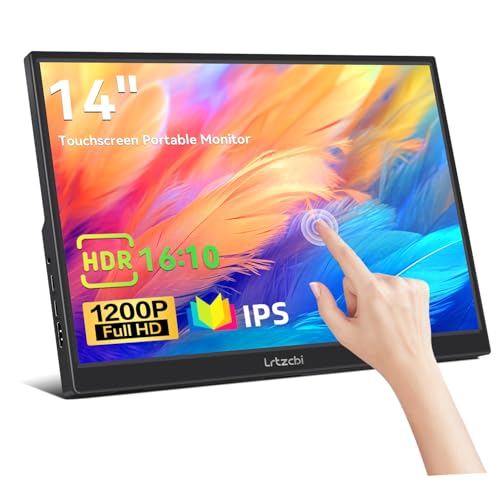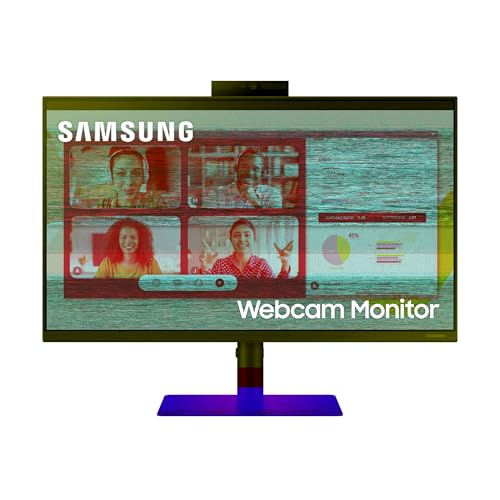Introduction to Touchscreen Monitors: What You Need to Know
Understanding Touchscreen Technology
Touchscreen monitors have rapidly evolved over the years and have become a staple in many households and work environments. They provide the ability to interact directly with what’s displayed on the screen through touch gestures, making them intuitive and user-friendly. Perhaps you’ve experienced using a smartphone or tablet; the interface is similar. Touchscreen monitors combine the functions of a traditional display with the interactivity of a touchscreen, allowing you to navigate menus, zoom in on images, or even draw directly on your screen.
Versatile Usage Scenarios
Imagine setting up a touchscreen monitor in your kitchen to follow recipes while you easily swipe through ingredients or watch cooking tutorials. Alternatively, envision how a touchscreen could enhance communication in an educational setting, making lessons more interactive and engaging. Whether for browsing, teaching, collaborating, or gaming, touchscreen monitors cater to diverse needs.
Key Features to Look For in a Touchscreen Monitor
Display Size and Resolution
When selecting a touchscreen monitor, consider the display size and resolution, as these factors significantly influence your viewing experience. A larger screen, such as 27 inches or more, is ideal for multitasking or immersive applications, while smaller sizes might suffice for basic use. Pairing a good size with a high resolution, like Full HD or 4K, ensures crisp images and vivid colours, enhancing everything you do on it.
Touch Technology Types
There are generally two types of touch technology to look into: resistive and capacitive. Resistive screens are typically cheaper and work well with gloved fingers, making them suitable for industrial use. Capacitive screens, on the other hand, are more responsive and support multi-touch gestures, offering a smoother experience for everyday applications.
Connectivity Options
Next, evaluate connectivity options. A monitor with multiple ports such as HDMI, DisplayPort, and USB will ensure it connects easily with various devices, whether it’s your laptop, gaming console, or digital camera. This flexibility maximises the functionality of your touchscreen monitor.
Ergonomics and Build Quality
Make sure to choose a monitor with good build quality and ergonomics. Adjustable stands or those with VESA compatibility will let you set up the monitor comfortably, avoiding strain during long usage. Consider the screen’s durability, as a sturdy build can prevent damage from frequent use.
The Best Touchscreen Monitors for Home Use
Family-Friendly Options
For home environments, we recommend touchscreen monitors that cater to family needs. Consider models like the larger touch monitors that provide excellent resolution and versatile touchscreen functionality, which makes them perfect for family activities, from browsing the web to creating artwork. A model with an integrated stand may offer convenience by providing different viewing angles, accommodating various heights.
Affordable Yet Functional
If your budget is a concern, there are also affordable yet functional options available. Smaller monitors with decent touch capability are great for casual use, enabling browsing and basic applications without overwhelming your space or finances.
Touchscreen Monitors for Professional Environments
Meeting Room Solutions
In professional settings, especially in meeting rooms, a good touchscreen monitor can enhance collaboration. Opt for models with robust software compatibility and larger screens, as these facilitate clarity during presentations and ease of interaction. Features like built-in camera mounts can also integrate seamlessly with video conferencing tools.
Industrial Applications
For industrial applications, rugged touchscreen monitors designed to withstand harsh conditions are essential. Look for features like water resistance, durability, and higher levels of touch sensitivity to help in various workflows. These specialized monitors cater to hands-on scenarios where conventional screens may fail.
Tips for Maintaining Your Touchscreen Monitor
Regular Cleaning Practices
To keep your touchscreen monitor in good shape, establish a regular cleaning routine. Use a microfiber cloth and a gentle cleaning solution suited for electronics to avoid damage. It’s important to avoid harsh chemicals that can affect the touch functionality or screen clarity.
Software Updates and Calibration
Additionally, keep an eye on software updates from the manufacturer for improved performance and security. Regularly calibrating your touchscreen can also enhance sensitivity and accuracy, ensuring you enjoy a responsive and enjoyable user experience throughout its lifespan.



































